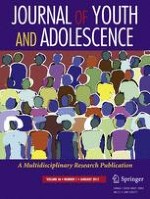03-11-2016 | Empirical Research
The Role of Perceived Stress and Self-Efficacy in Young People’s Life Satisfaction: A Longitudinal Study
Gepubliceerd in: Journal of Youth and Adolescence | Uitgave 1/2017
Log in om toegang te krijgenAbstract
Life satisfaction is an important indicator of successful development. However, adolescents’ life satisfaction tends to be relatively unsteady, and environmental influences play a critical role in shaping life satisfaction among adolescents in the transition to young adulthood. Given the paramount importance that education plays in adolescents’ lives, adolescents’ life satisfaction may vary as a function of school-related stress experience. At the same time, coping resources may help reduce adverse effects of stress on life satisfaction. With this in mind, we examined whether, and to what extent, perceived stress in education and general self-efficacy (a resource that facilitates coping) affect the life satisfaction of adolescents in transition to young adulthood. We distinguished between baseline levels of stress and self-efficacy and within-person change in stress and self-efficacy to determine whether life satisfaction is sensitive to fluctuations in stress and self-efficacy when person-specific levels of stress and self-efficacy are taken into account. Estimating growth curve models on data from a panel study on the life trajectories of compulsory-school leavers (n = 5126, 55.3 % female), we found that baseline levels of stress and self-efficacy, as well as within-person change in stress and self-efficacy, affected adolescents’ life satisfaction. Moreover, our results showed that baseline self-efficacy mitigated the negative effect of baseline stress on life satisfaction. These findings improve our understanding of two major psychological determinants of adolescents’ life satisfaction and extend our knowledge of life satisfaction trajectories during the transition to young adulthood.
